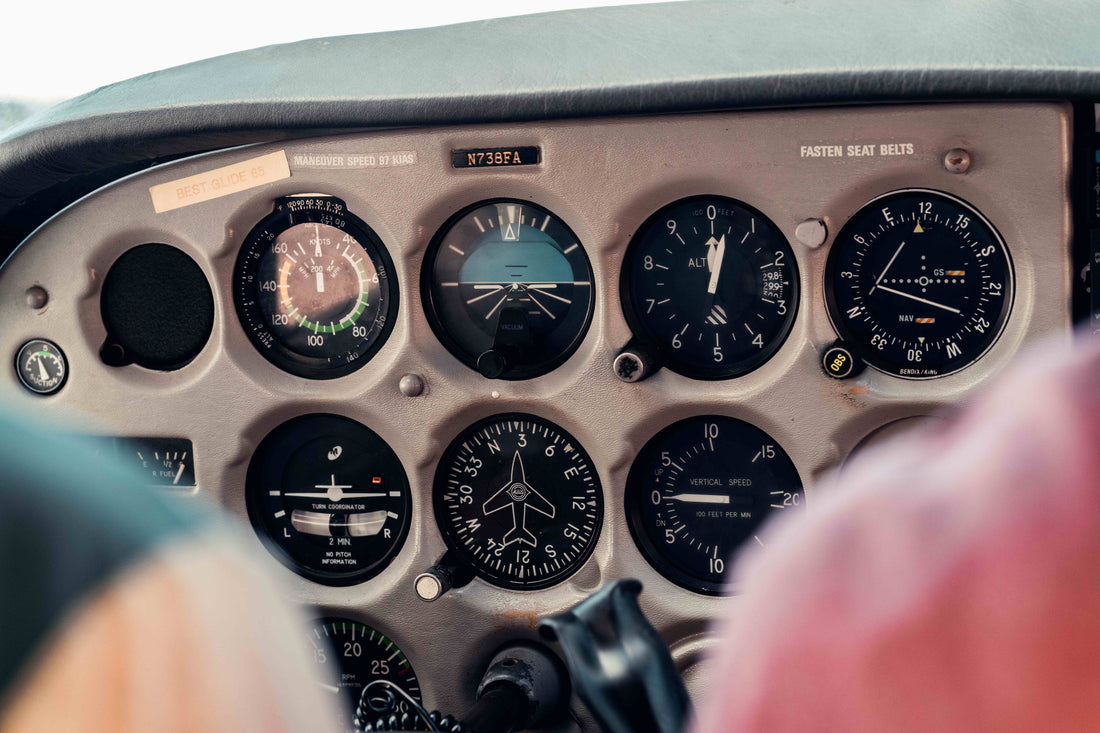
How to Get an Instrument Rating: 7 Steps to Follow
By Leslie Caubble, CFI/IGI
The Instrument Rating is an excellent goal after you’ve completed your Private Pilot training. It’s a requirement if you want to become a flight instructor and for most jobs as a commercial pilot. Even if you don’t have any intentions of flying for hire as a commercial pilot one day, being an instrument-rated pilot can add a layer of safety and skill to everyday flying. That’s where learning how to get an instrument rating becomes important.
How to Get an Instrument Rating and Why It’s Worth It
If you’re flight training at a Part 141 school, your syllabus and plan of action to earn the Instrument Rating will be clearly laid out for you. For those who train at a Part 61 flight school, especially the smaller ones or with an independent CFII, the pathway to the rating may not be clearly defined. Many students show up at the airport with no training strategy and end up spending more time and money obtaining the rating than they should.
In this article, I’ll share seven of my best tips for completing your Instrument Rating efficiently. First, let’s review some of the requirements under Part 61.
Training Requirements for the Instrument Rating
- 50 hours of cross-country flight time as pilot in command, of which 10 hours must have been in an airplane
- 40 hours of actual or simulated instrument time on the areas of operation listed in 65(c)
- At least 15 hours of instrument flight training from an authorized instructor in the aircraft category for the instrument rating sought
- Instrument training on cross-country flight procedures that includes at least one cross-country flight in an airplane that is performed under IFR. This flight must consist of:
- A distance of at least 250 nm along airways or ATC-directed routing.
- An instrument approach at each airport.
- Three different kinds of approaches with the use of navigation systems
- At least 3 hours of instrument training that is appropriate to the instrument rating sought from an authorized instructor in preparation for the checkride, within two calendar months before the examination date
Steps to the Instrument Rating
During my own IFR training, I planned in advance after seeing the advice of more experienced pilots, flight instructors, and online resources. Following these seven steps helped me earn my Instrument Rating in the minimum required hours. I felt skilled, knowledgeable, and confident going into my checkride!
Step One: Your “Intro to IFR” Lesson
When you’re ready to start building your flight time and begin instrument training, book a lesson with a CFII. Ask the instructor for an introductory lesson on IFR.
If they aren’t sure what to do, request some ground and flight training on the instrument scan. While you’re flying, wear your foggles and let your CFII review scan technique, cross-checking instruments, and tips for flying more precisely.
Step Two: Time Building
New Private Pilots are excited to show off their skills to friends and family. These flights are typically local in nature. A good mantra to have is “make every flight count.” A cross-country flight means flying to and landing at an airport more than 50 nm away. If you can incorporate fun flights into cross-country flights, pretty soon, the required 50 hours will add up.
Bonus strategy: Grab a pilot friend who qualifies to act as your safety pilot on a cross-country flight. While you’re wearing the foggles, be intentional about maintaining altitude and work on your instrument scan. If your safety pilot is also building time, you can switch seats. This is a cost-effective way to build cross-country and simulated instrument time, while splitting the operating cost of the airplane. (For more information on correctly logging time as a safety pilot, refer to the 2009 Gebhart, Hilliard, and Van Zanen FAA Letters of Interpretation.)
Step Three: IFR Ground School
Subscribe and complete an IFR online ground school during your time-building phase. Understanding how to get an instrument rating means more than just flying. A ground school will lay the knowledge foundation that is essential to successful instrument training and passing the FAA knowledge test.
You may get advice to only prepare for the knowledge exam by using the Sheppard Air method. While that’s a great test prep program, a complete ground school will help you connect the dots when you are training with a CFII.
During your ground school, be sure to have a current FAR/AIM, Instrument Flying Handbook, and Instrument Procedures Handbook available for further study.
Step Four: Pass the FAA Knowledge Test (IRA)
When you have taken multiple practice tests with good scores (aim for three tests with a score of 90% or greater), then you’re ready to schedule the knowledge exam. With the past exam out of the way, you now have the foundational knowledge to understand more about the airplane, and you’ll be able to focus on flying and preparing for the checkride. This will help you save time and money in training.
When you’ve accumulated 25 hours of simulated instrument time with the help of a safety pilot, 40-45 hours of cross-country PIC time, and passed the FAA IRA knowledge test, you’re ready to book flight lessons with a CFII.
Step Five: Time to Train!
If time and budget allow, two lessons a week is a good pace for instrument training without feeling too overwhelmed. This will allow extra time for additional ground sessions with your instructor, debriefing and preparing for the next lesson, chair flying, and studying for the oral exam of the checkride. Accelerated programs are available at many schools, but in my experience, this format produces a more well-rounded instrument pilot.
Bonus strategy: Alternate lessons in the aircraft with lessons on a simulator if you have access to one. If you are falling short on simulated instrument hours, some BATD and AATD sims are authorized to log hours when receiving instruction from a CFII. Simulators are invaluable for practicing holds, partial panel, emergencies, and approaches. Simulators have the advantage of the “pause” button to stop, start again, ask questions, discuss scenarios, and repeatedly practice approach procedures.
Step Six: IFR Cross-Country
Your long IFR cross-country flight (at least 250 nm) is where your knowledge, communication, and instrument skills all come together. It’s an instructional flight where you’ll file IFR and fly three different approaches. Flying this cross-country flight near the end of your training will allow you to fully handle every task, including radio communication, under the guidance of your CFII. This is an excellent way to end your training and move you into final checkride preparation.
Step Seven: Prepare for the Checkride
Throughout your training, if you constantly refer to the Airman Certification Standards (ACS), you should be well prepared for the checkride at this point. Your instructor will fly with you for a minimum of three hours in preparation and verify that all ground subjects have been covered.
Carefully review your logbook hours, endorsements, and aeronautical experience. ASA’s Instrument Rating Oral Exam Guide is an excellent resource for studying. Schedule one or two mock oral checkrides with a neutral instructor to increase your confidence.
Getting your Instrument Rating will enable you to fly safely and legally in the clouds, handle the aircraft more accurately, make better weather-related decisions, and ultimately make you a better pilot. These seven steps simplify how to get an instrument rating and help you build the skills you actually need.
Following these seven steps as a guide should give you a great plan of action for your training, making the pursuit more enjoyable, less costly, and less frustrating.
By Leslie Caubble, CFI/IGI
Northstar Aviation References brings you the Pre-Tabbed ASA FAR/AIM, DIY tabs for your FAR/AIM and other pilot resources so that you can more easily study the regulations that form the foundation of your flying career or hobby. Have any questions? Check out our FAQs page or contact us. Check out other blog posts here.
